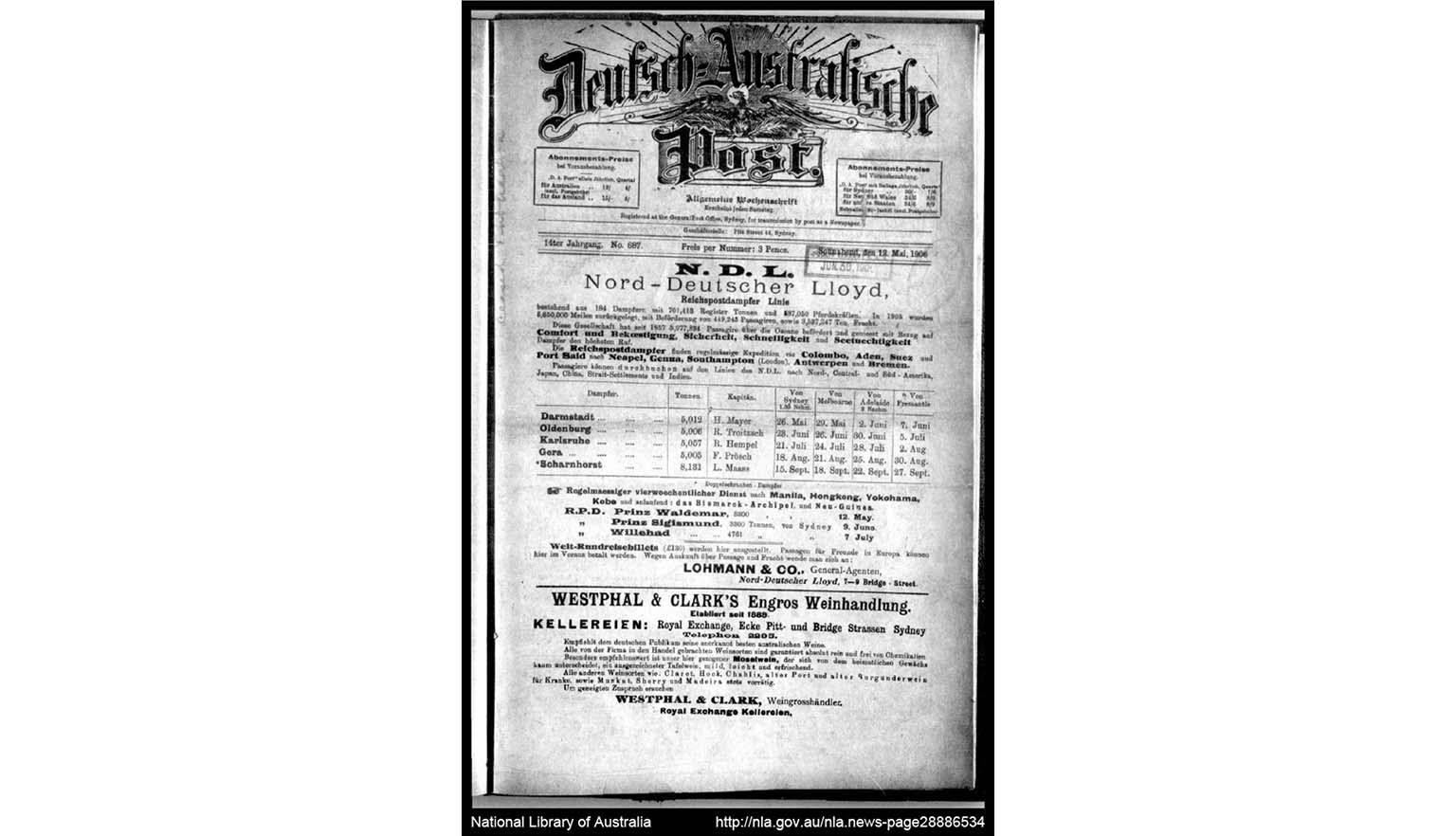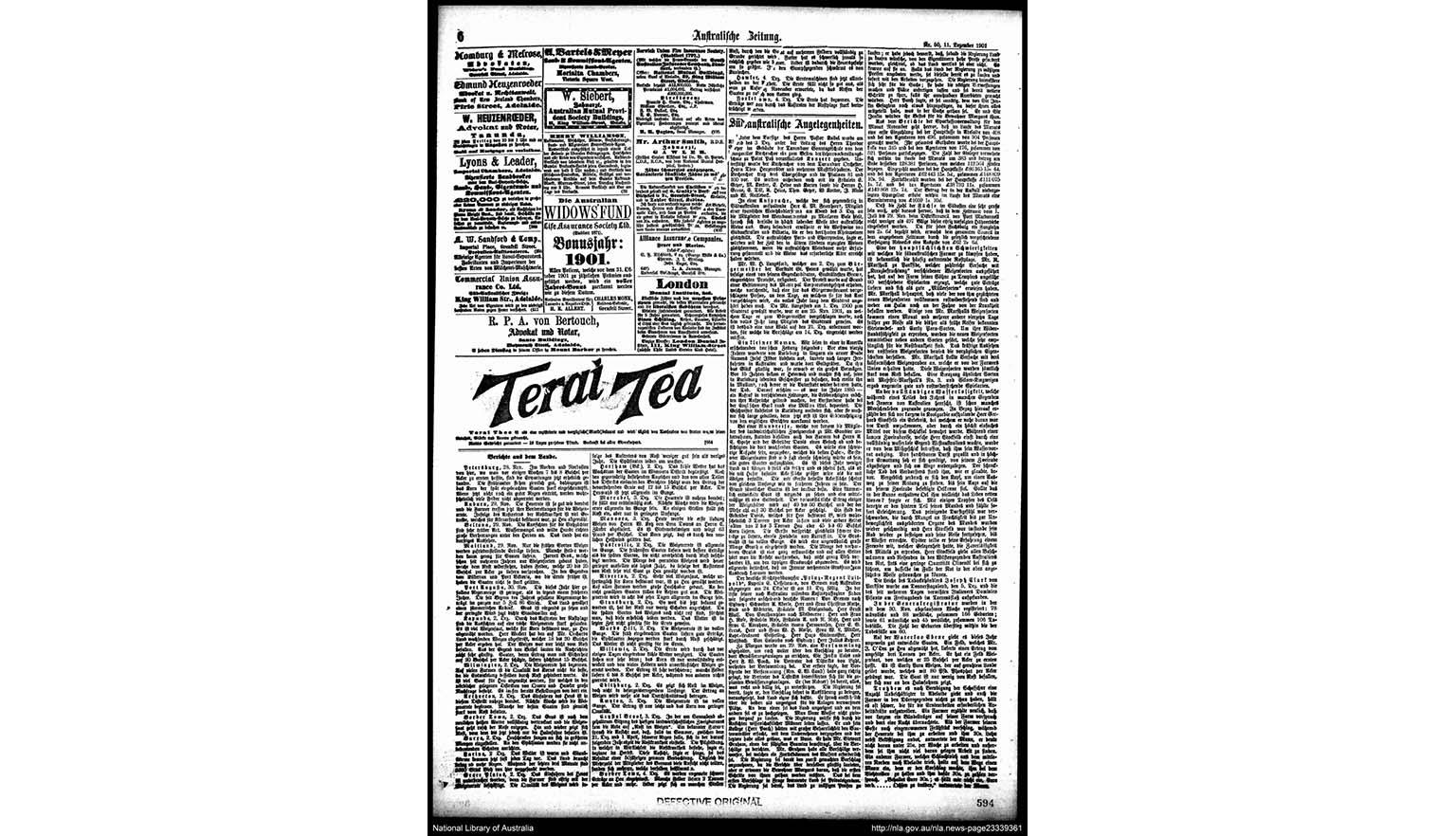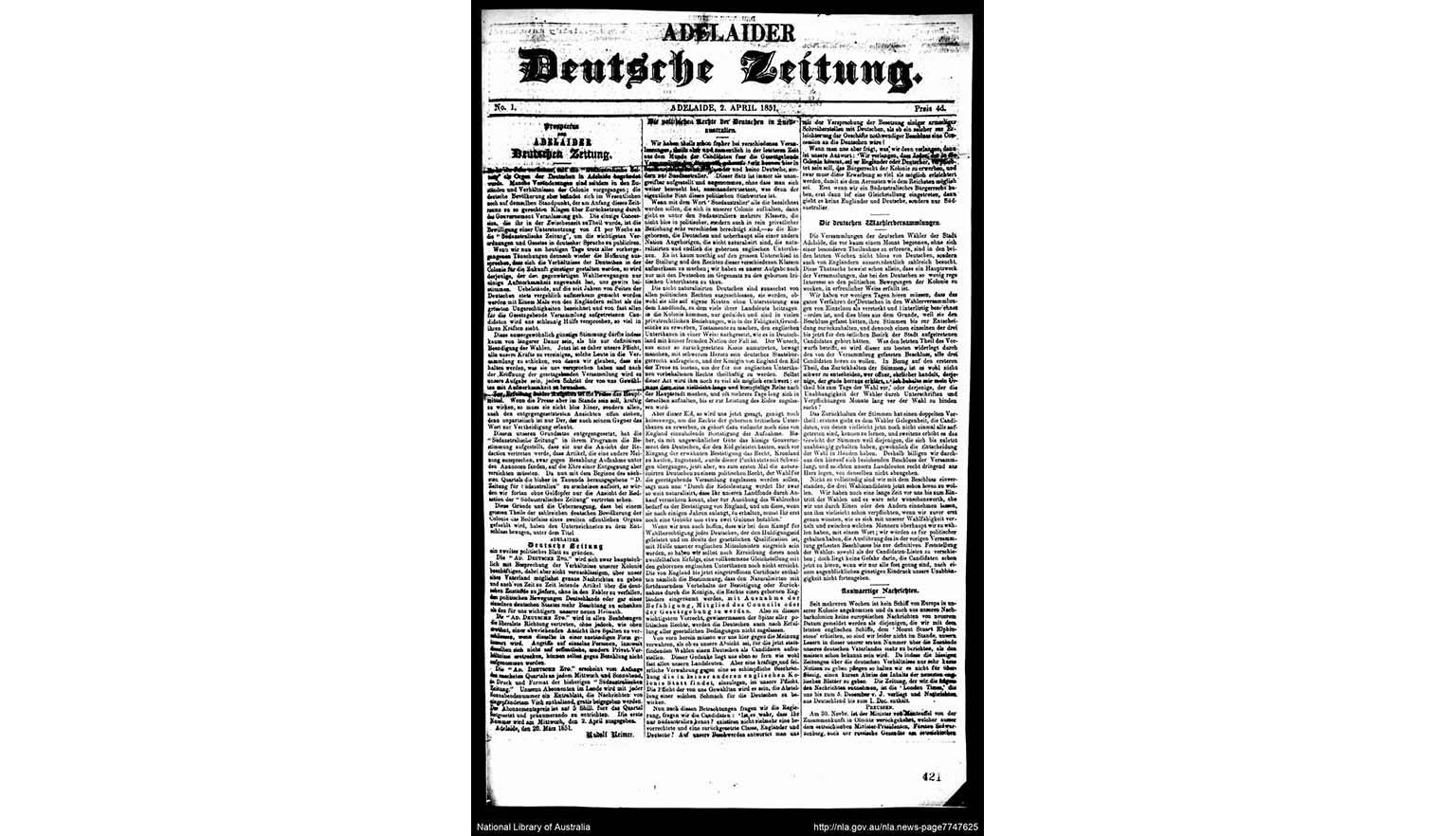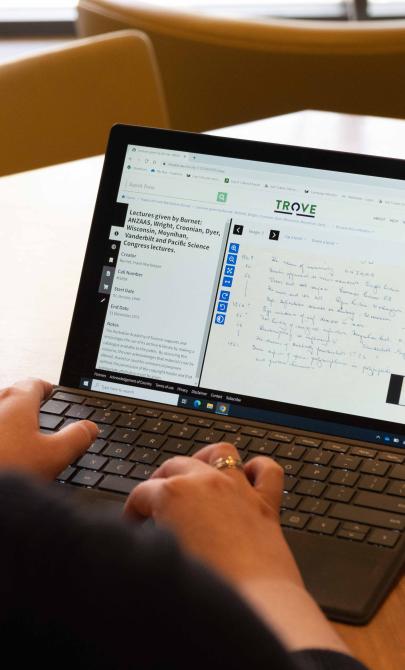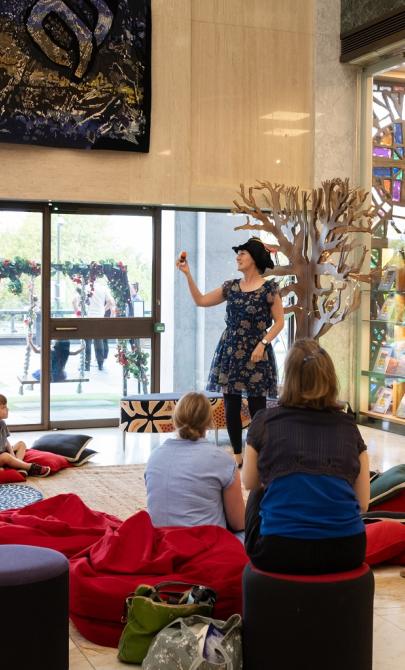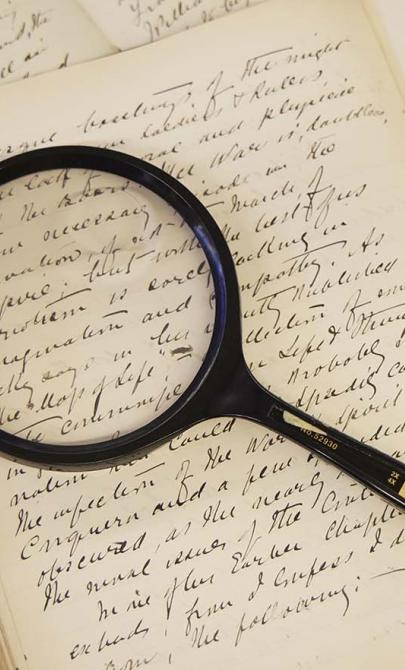German
German settlement in Australia
German migrants were among the early pioneers who arrived in Australia after colonisation. Around 10,000 Germans came during the gold rushes of the 1850s.
During the First and Second World Wars, German Australians were often treated with suspicion and faced social isolation. Many families anglicised their surnames to avoid discrimination, leading to the loss of cultural records and the erasure of some community histories.
After World War II, many Germans migrated to Australia as displaced persons. These post-war arrivals helped to re-establish churches, schools and cultural institutions. One such organisation was the Melbourne German Gymnastics Club, originally founded in the 1860s at 115 Victoria Parade, Fitzroy. Although it closed in 1916, it remains an example of early German community life in Australia.
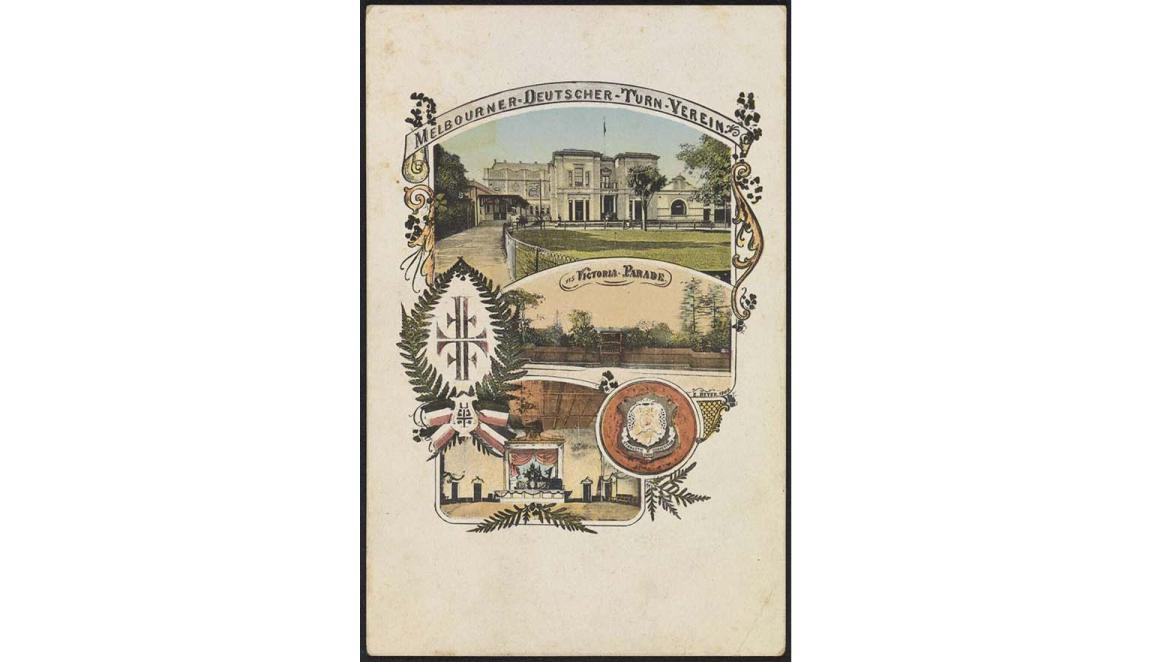
E Beyer, Melbourner Deutscher Turn Verein, Melbourne German Gymnastics Club, 1907, nla.gov.au/nla.obj-153092113
E Beyer, Melbourner Deutscher Turn Verein, Melbourne German Gymnastics Club, 1907, nla.gov.au/nla.obj-153092113
Learning activities
Activity 1: Write a mystery article
Have students write a newspaper article about a mystery—real or imagined. This activity encourages students to:
- consider the writing style and tone
- demonstrate a range of grammatical and stylistic techniques
- tailor their writing for a specific audience and purpose
Activity 2: News from the homeland
Hold a class discussion on how the delivery of information from a country of origin might influence the content and tone of newspapers written in that language. Consider:
- political or media influences
- cultural values and narrative styles
- the impact of distance and diaspora
Activity 3: Explore multilingual newspaper content
Ask students to explore the articles and content of the newspaper resources linked earlier in the module. Encourage them to:
- identify key themes or recurring topics
- reflect on how language and culture shape the way news is reported
